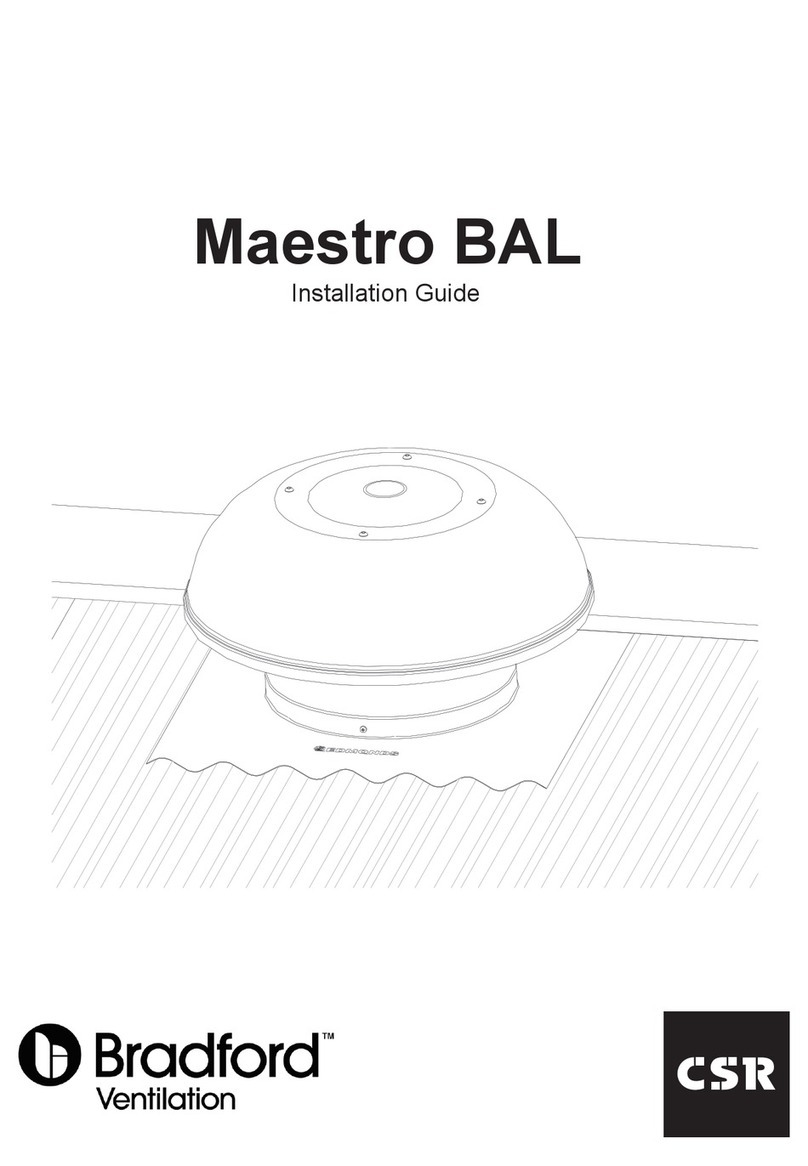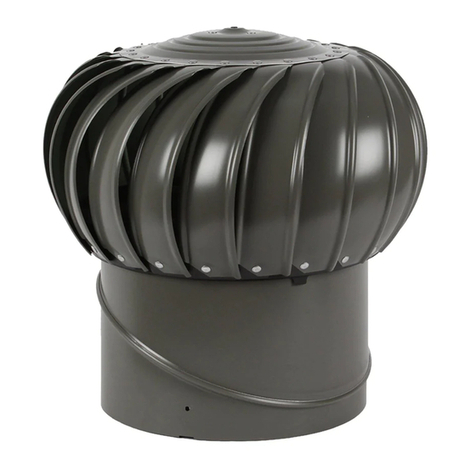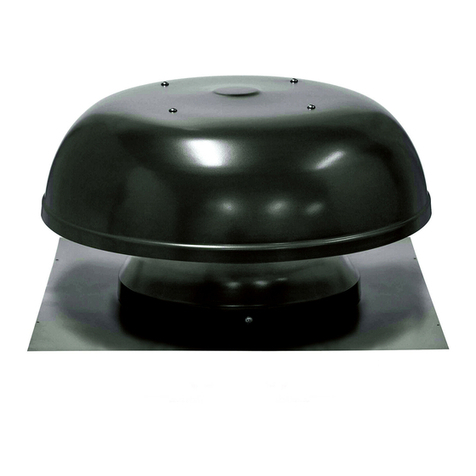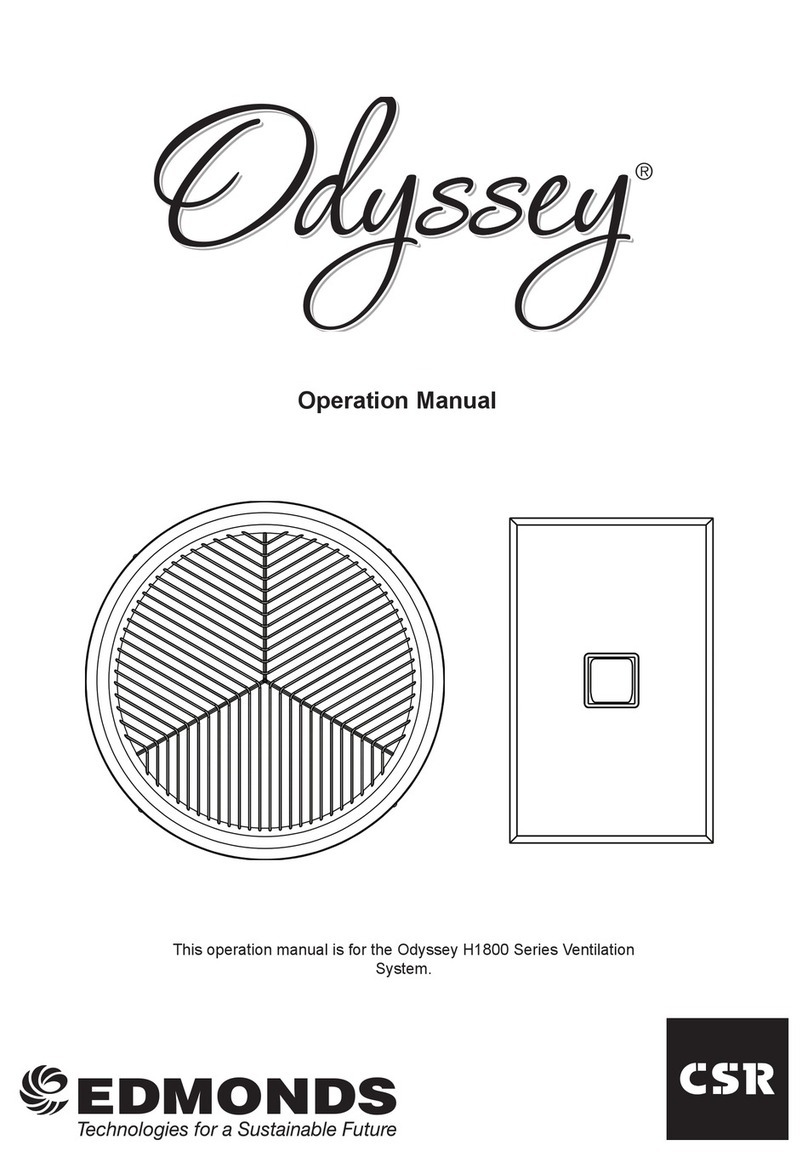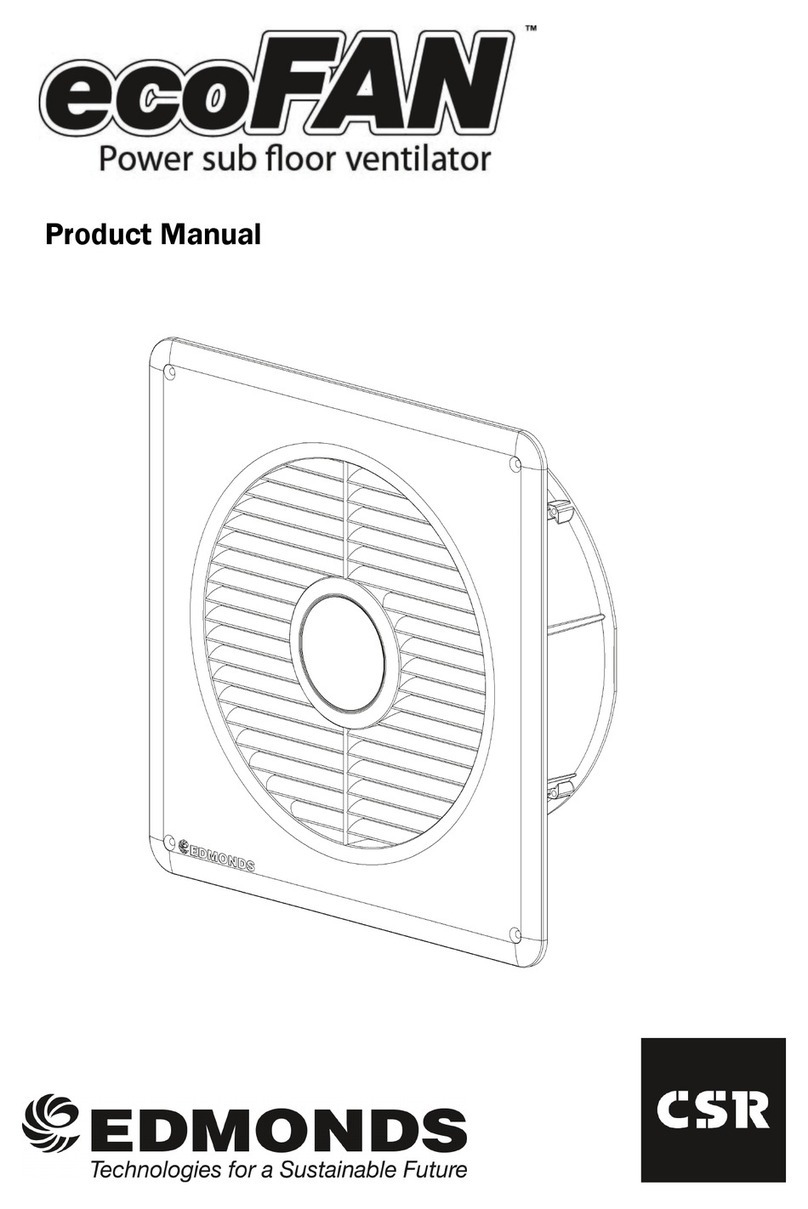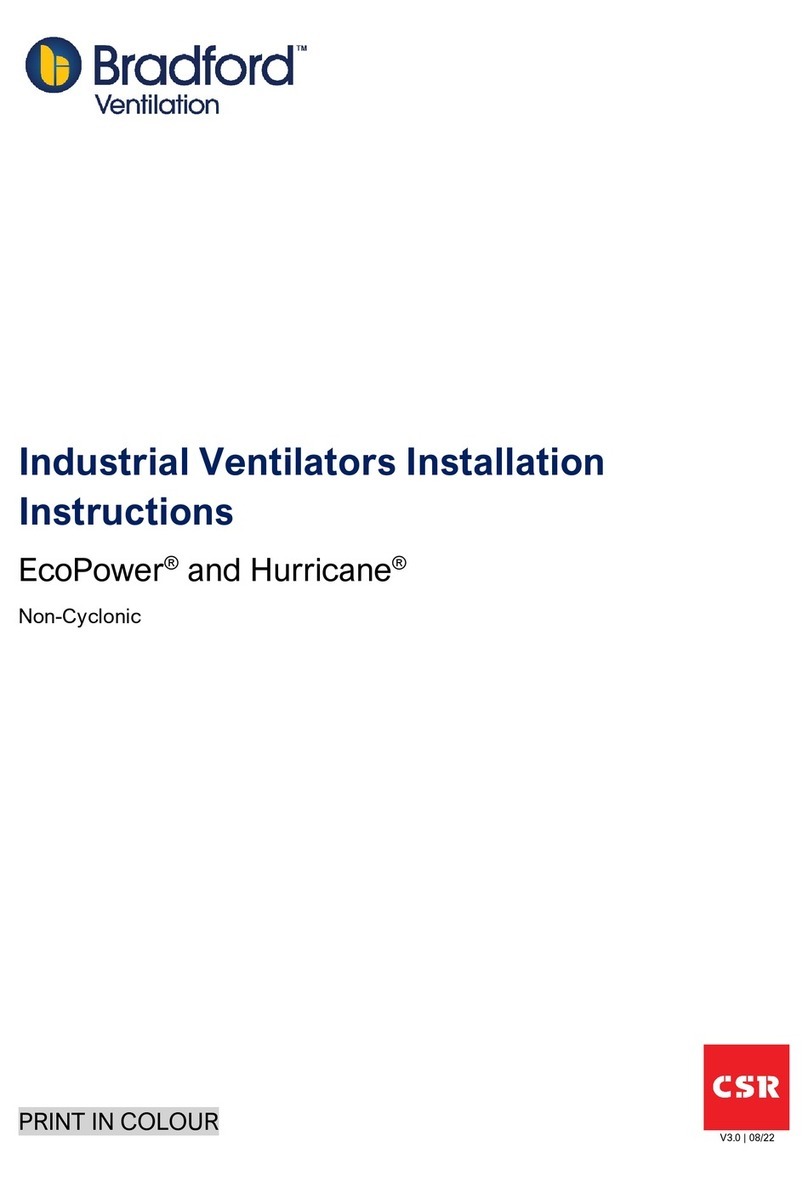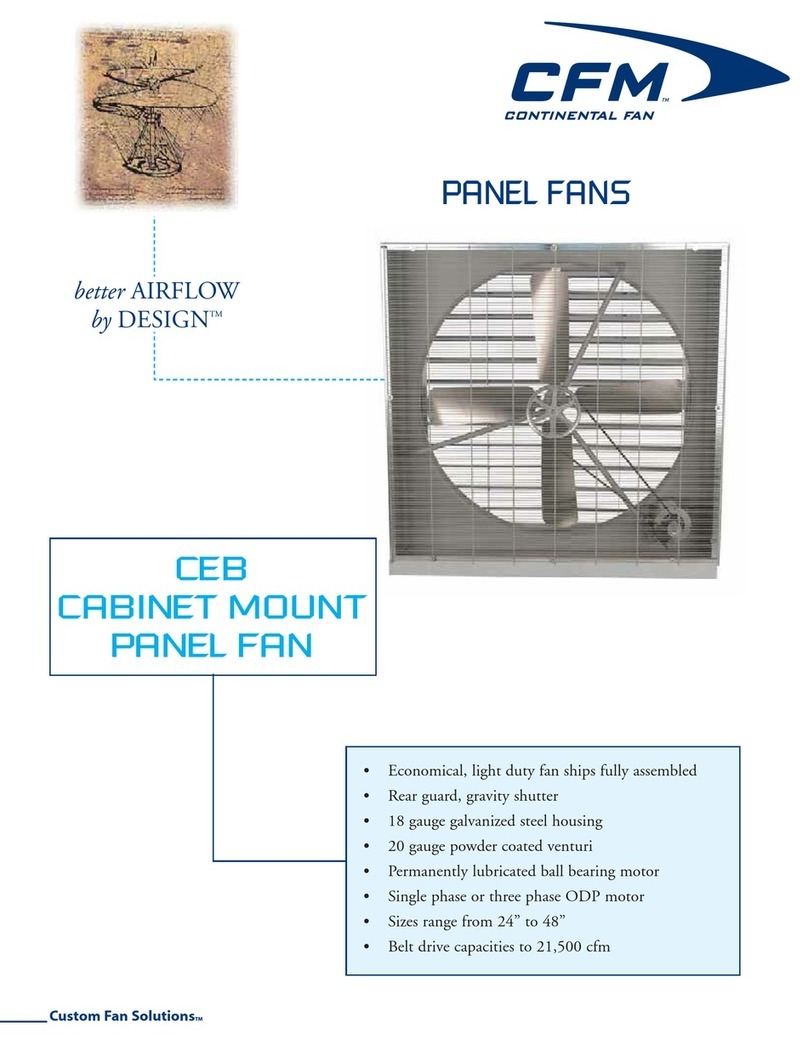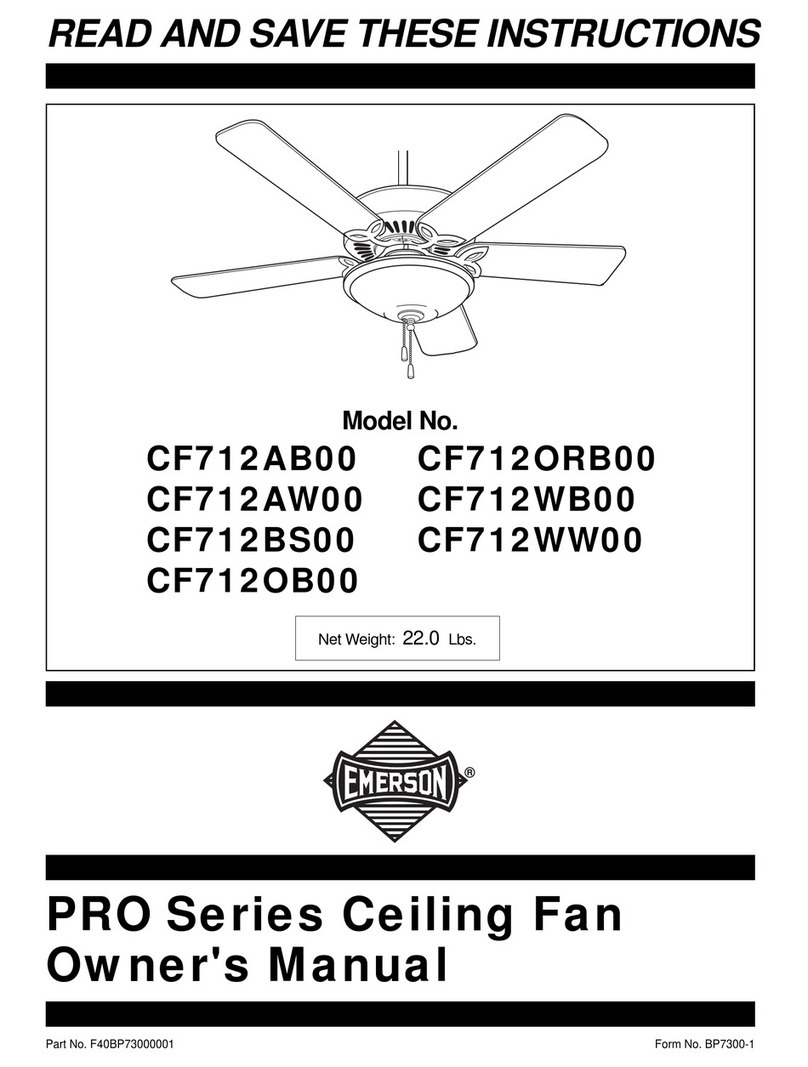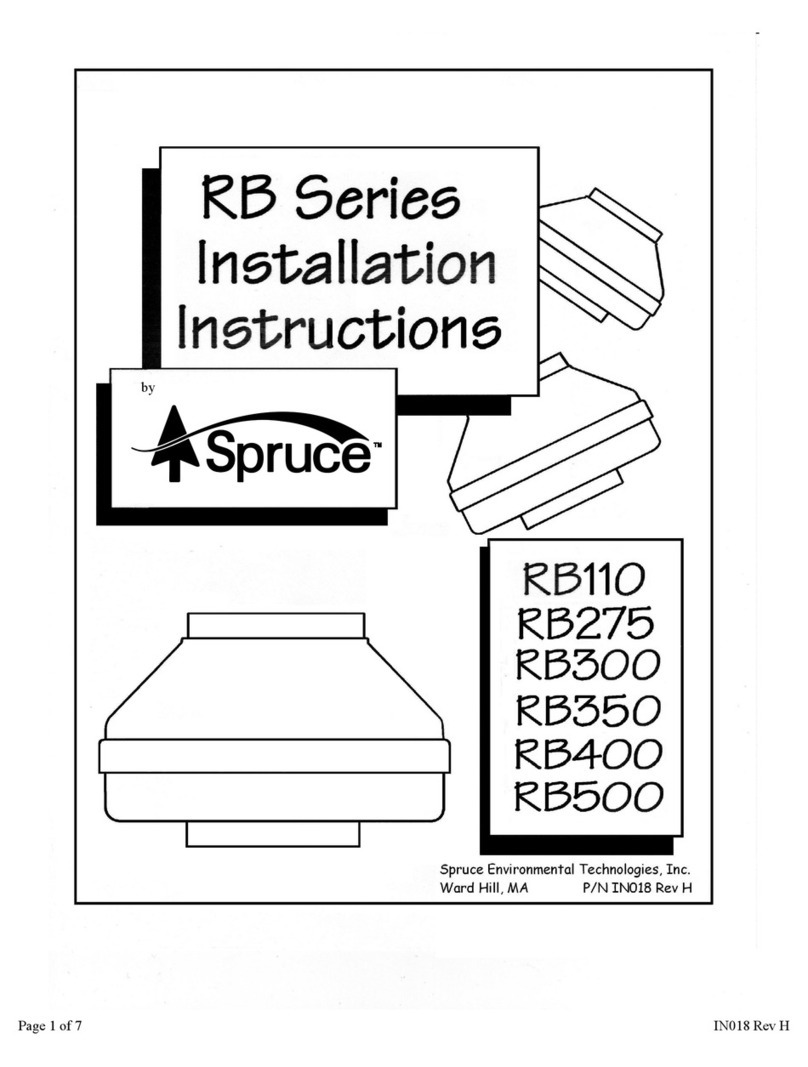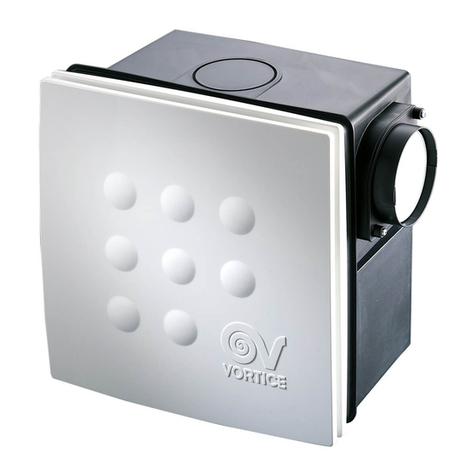CSR Bradford Maestro BAL User manual

Product Manual

2
Item Checklist & Additional Tools Required For Installation
1
Maestro BAL Ventilator 1
2Smart Box 1
3Power Supply 1
4Fixing Strap 1
5Smart Box Fixing Screws 2
6Product Manual 1
7Warranty Document 1
Soft Rubber Hammer
Caulking Gun (Non BAL Install Only)
Suitable Silicone Sealant (Non BAL Install Only)
Angle grinder with cutting disc (Tile roof only)
Screw/Nail for fastening Fixing Strap (Tile roof only)
Knife (Sarked roof only)
Foil Tape (Sarked roof only)
Marker Pen
Nibbler or Similar Cutting Tool (Metal roof only)
10G Tek Screws or Sealed Rivets (Metal roof only)
Side Cutters
Additional Parts & Tools Required (Not Supplied)
Included Parts: Qty:
*** For BAL Compliance NO sealant should be used.
Instead care needs to be taken when forming the flashing
so that no gaps greater than 2mm are present.

3
4
1
2
3

4
Warnings and Important Notices
WARNING: Do not proceed with the installation until you have read
the entire instructions, including these warnings.
INSTALL AT YOUR OWN RISK
The installation of this product may be dangerous and includes the potential
of death, personal injury or property damage. Please be aware of the
following before installing this product.
• Follow any state or territory regulator OH&S guidelines for working
at height (e.g. Roof work), electrical, working in elevated temperatures
(e.g. roof space in summer).
• Installation requires climbing and working at heights.
Use caution to minimise risks by:
• Clearing the area below the workspace
• Not walking on surfaces that are slippery, wet or dusty
• Using appropriate equipment (tie off ladders etc.)
• DO NOT attempt to install if you are uncomfortable with working at
heights or on sloping roof surfaces
• There are sharp edges on the ashing, cut tiles, roof sheeting etc.
Take care and wear personal protective equipment when handling
and installing products
• Be aware that the Maestro BAL once connected to mains power will
start. Do not connect the unit to mains power until the installation is
complete.
• DO NOT attempt to put anything into the running fan blades as
this many cause personal injury and/or damage to the unit.
• Be aware of electrical cabling in the roof. If there is any sign of risk,
isolate the power before entering the roof space. Be aware that there can
be non-isolated electrical cables such as mains supply and solar
supply. Note if these are in the roof space and avoid these items.

5
Warnings and Important Notices
• When installing eave vents be careful to determine that the eave
cladding material does not contain Asbestos. If it does or you cannot
determine the make up, then the eave vent can only be installed
using correct asbestos handling procedures by a person trained
and/or licensed to handle asbestos.
IMPORTANT NOTES
•The Maestro BAL is designed for general household ventilation only.
DO NOT use to exhaust hazardous or explosive materials and
vapours.
•DO NOT use in areas contaminated with oil vapour from cooking or other
oils. Oil vapour may cause product housing damage, electrical failure or
fire.
•The Maestro BAL has an unguarded fan blade assembly when
accessed from below. DO NOT use in locations readily accessible to
people or animals.
•Always use the provided power supply and Smart Box to power the
fan. Failure to do so can damage the product.
•If mains electrical connections are required (e.g. wiring a power
point), then they must be carried out by a licensed electrician in
accordance with local wiring codes and regulations
•Power supply and Smart Box are for dry indoor use only. Ensure
that the power supply and Smart Box are not mounted on a damp
surface or in a location where they could be exposed to moisture
or liquid water. Fasten to the structure with screws or cable ties
as required.
•Only use one Maestro BAL per Smart Box and power supply.

Installation—Speed Control Mode
low power consumption.
MED -
HI -
AUTO -
Continuous operation, moderate speed, moderate flow rate.
Continuous operation, high speed, high flow rate.
Variable speed. The Maestro BAL will automatically increase or
decrease the speed of the fan depending on roof cavity temperature
(30°C - 45°C) and roof cavity relative humidity (65%rH—80%rH).
In AUTO mode the Maestro BAL will respond to the temperature and humidity
conditions stated above.When the conditions are deemed suitable for no
ventilation the unit will enter power saving mode and the motor will not run.
DEFAULT MAESTRO BAL PROGRAMMING
All Maestro BAL units are default factory programmed to operate at a 30% power fixed
speed ventilation mode to meet the Bradford NCC2019 Performance Solution. This mode
runs continuously on a low power setting day and night to provide ventilation of heat
and moisture in the roof cavity. For more information on how many Maestro BAL and
eave vents are required to satisfy the National Construction Code via Performance
Solution please see Page 7 of this product manual.
If the Maestro BAL is not required for new-build NCC2019 compliance, the Bradford Air iQ
smart box can be activated by holding down the 'Mode Button' for at least 5 seconds.
*Important Note* The default setting of 30% motor speed must not be changed if using the Maestro BAL
to meet the National Construction Code. If this setting is changed, it cannot be reactivated.
Once the Bradford Air iQ Smart Box is activated the order of modes are: LO. MED. HI, AUTO.
When engaging AUTO mode the fan will activate to full speed and then slow down to a stop
to provide feedback that AUTO has been selected. Once this startup procedure is complete
the fan will analyse the environment and run at the appropriate speed.
MODES: LO -
Continuous operation, low speed, low flow rate, very quiet, very
SMART BOX
6

Bradford NCC2019 Performance Solution
The Bradford NCC2019 Performance Solution provides an alternate method to
comply with the Deemed-To-Satisfy roof ventilation requirements listed in
NCC2019 Volume 1 Clause F6.4 and NCC2019 Volume 2 Clause 3.8.7.4
Please note, compliance with the NCC2019 is only mandatory for new build
residential homes, and may not apply to reroof, or installation onto existing homes.
How To Comply with NCC2019 Performance Solution
To comply, the installation of both Maestro BAL and Metal Eave vents are required.
The number of Maestro BAL and Metal Eave vents required is determined by the
ceiling size directly under the roof space of the home.
General requirements for implementation of this performance solution
•Calculate the area (m2) of ceiling directly under the roof space;
•Install Maestro BAL(s) running at 30% power^ according to the table below
•Install Bradford metal eave vents according to the table below
Note: Bradford metal eave vents cannot be substituted for any other type of eave vent
including poly eave vents due to the specific openess factor required.
•Distribute the metal eave vents evenly as per NCC2019
^All Maestro BAL are default set to a continuous 30% fixed speed. To comply with NCC2019 Performance
Solution this setting must not be changed. See Page 4 for more details.
7

8
Installation - Tiled Roof
STEP 1
Select a suitable
position for the
ventilator on the roof
no higher than the third
row of tiles down from
the ridge.
Take care to check
that there are no
obstructions below the
tile such as a rafter.
The removal of a tile higher than the third row down from
the ridge may damage the ridge tile pointing and is NOT
recommended.
*Note* If installing in accordance with the NCC2019 Performance Solution,
the Maestro BAL must be located not more than 900mm below the ridge or
the highest point of the roof space when measured vertically.

STEP 2
Position the ventilator in
the desired location to
determine which tiles need
to be removed or cut.
Mark out position and
determine tiles to be
removed or cut.
Installation - Tiled Roof
STEP 3
Remove a single
complete tile as
required.
Cut other tiles as
required to t the
housing.
Cut the removed tile
and leave the lower
portion tted in place.
This helps to seal the
ashing.
Cut Tiles
Depending on roof construction a tile batten may be
obstructing a clear access to the throat. This batten can be
left in place with the Maestro BAL sitting above it.
9

Installation - Tiled Roof
STEP 4
If the roof is sarked, cut
sarking in a cross and fold
back onto itself to give a
300mm opening.
Tape the corners to the
surrounding sarking with
foil tape to prevent them
fouling the ventilator.
Folding the cut sarking aps back on themselves results in a
gutter arangement that helps to prevent any water running down
the sarking from entering through the opening
STEP 5
Fit the ventilator into
place and ensure
surrounding tiles are
tted securely.
For BAL compliance, no gaps greater than 2mm may be
present. A water tight install can be achieved by carefully
forming the flashing to the tile profiles, without the use of
sealant.
10

11
Installation - Tiled Roof
STEP 6
Fold and form the front
edge of the ashing to
seal against the tiles
below.
Using a soft hammer,
carefully dress the front
and sides of the ashing
into the shape of the tiles.
For BAL installs this
must be done with care
to ensure that no gaps
greater than 2mm are
present.
SOFT
HAMMER
STEP 7 - NON BAL ONLY
To assist with
weatherproofing a bead of
silicone sealant can be
applied between the tiles
and the side and front
edges of the flashing.
THIS SHOULD NOT BE
DONE FOR BAL ZONE
INSTALLATIONS DUE
TO THE COMBUSTIBLE
NATURE OF SEALANTS.

12
Installation - Tiled Roof
Turning the rear of the ashing upwards
allows it to act as a gutter to prevent any
wind driven water from entering the roof
space.
FLASHING UPSTAND
FIXING STRAP
SCREW/NAIL
BATTEN
STEP 8
Form the fixing strap so
that one end can hook
over the f ashing upstand
From within the roof
space, hook the fixing
strap over the edge of the
f ashing upstand at the
lowest point of the roof.
Screw/nail (not supplied)
the fixing strap to the
bottom batten to securely
hold the ventilator down.
For additional weather
proofing turn the rear
edge of the flashing up so
that it seals against the
tiles above.
PROCEED TO ELECTRICAL CONNECTION
*Important Note* If using the Maestro BAL to comply with NCC2019 Performance
Solution additional Maestro BAL's and eave vents may be required depending on the
ceiling area of the home. For more information on the number of Maestro BAL and
eave vents required see Page 7 of this manual or visit bradfordventilation.com.au
Installing an eave vent
Mark a 185mm x 385mm rectangle
on the eave lining
Drill holes to mark out the rectangle
Use a hacksaw to cut out the
rectangle
Attach the vent using the screw
provided

13
Installation - Metal Roof
STEP 9
Select a suitable position for
the ventilator.
Slip the top edge of the
ashing under the ridge cap
and mark position.
To Install the vent lower
down the roof, appropriate
backashing must be
installed, extending back to
the ridge capping.
Ensure that the ashing covers the roof corrugations or ribs
equally and that it is located between roof rafters.
MARK CENTRE
Note: Ridge capping screws may need to be removed whilst performing
installation. Upon completion, return the xing screws to the previous positions
*Note* If installing in accordance with the NCC 2019 Performance Solution,
the Maestro BAL must be located not more than 900mm below the ridge or
the highest point of the roof space when measured vertically.

STEP 10
Remove the ventilator
and cut a 300mm
square or round opening
around the centre of the
position marks.
Turn up the corrugations
or pans on both the low
and high sides. This will
help to prevent water
ingress.
TURN UP TURN UP
Installation - Metal Roof
STEP 11
Return the Maestro BAL
to the roof, positioning
it over the cutout.
Ensure that the top of
the ashing is slipped
under the ridge capping.
For lower pitched roofs,
turn up the top edge
of the ashing before
slipping under ridge
capping. This will help
prevent water ingress.
For BAL compliance, no gaps greater than 2mm may be
present. A water tight install can be achieved by carefully
forming the flashing to the roof sheeting profile, without the use
of sealant.
14

15
Installation - Metal Roof
STEP 12
Using a soft rubber
hammer, carefully
work around the sides
and lower edge of the
ashing to form it into
the corrugations of the
metal sheeting prole.
For BAL installs this
must be done with care
to ensure that no gaps
greater than 2mm are
present.
STEP 13 - NON BAL
ONLY
To assist with
weatherproofing a bead
of silicone sealant can
be applied between the
sheeting and the side
and front edges of the
flashing.
THIS SHOULD NOT BE
DONE FOR BAL ZONE
INSTALLATIONS DUE TO
THE COMBUSTIBLE
NATURE OF SEALANTS.

16
Installation - Metal Roof
STEP 14
Secure the flashing
to the metal sheeting
with Tek screws or
sealed rivets along the
3 exposed edges of the
flashing.
Approximately 10
required (not supplied)
PROCEED TO ELECTRICAL CONNECTION
*Important Note* If using the Maestro BAL to comply with NCC2019
Performance Solution additional Maestro BAL's and eave vents may be required
depending on the ceiling area of the home. For more information on the number
of Maestro BAL and eave vents required see Page 7 of this manual or visit
bradfordventilation.com.au
Installing an eave vent
Mark a 185mm x 385mm rectangle on
the eave lining
Drill holes to mark out the rectangle
Use a hacksaw to cut out the rectangle
Attach the vent using the screw
provided
Eave vents should be evenly distributed
around the perimeter of the home

17
Installation - Electrical Connection
STEP A
Connect lead coming from
the Maestro BAL fan unit to
the Smart Box
STEP B
Connect the power supply
lead to the Smart Box
STEP C
Connect the power supply to
a mains socket. Turn on and
check fan runs freely.
STEP D
Using either the supplied
screws or cable ties,mount
the Smart Box on a suitable
piece of structure that does
not place the it near direct
sunlight or the airflow of the
Maestro BAL.
STEP E
Set the control mode by
pressing the button on the
side of the Smart Box. Please
note the default 30% fixed
speed cannot be reactivated
if changed.
Ensure the power supply
is not in contact with
damp or wet areas.
Smart Box
Power Supply
How the connectors clip together
Connection
Connection
Maestro BAL
Warning: If using AiroMatic to comply
with NCC Performance Solution, be
careful not to accidentally press the
'Mode Button' on the smart box

18
Maintenance - Ember Screen
STEP 1
Remove the 4 screws securing
the dome
REMOVE SCREWS
Turn off the power to the Maestro BAL before conducting any
maintenance. Failure to do so will expose the running fan assembly
The only maintenance required for the Maestro BAL is the occasional cleaning of
the stainless steel ember screen. Time between cleaning depends on operating
conditions, however yearly cleaning should be performed to maintain optimal
performance of the product’s airow. To clean the ember screen follow the
instructions below.
STEP 2
Lift the dome to remove it and
place on a safe surface to
prevent scratching or damage.

19
Maintenance - Sparkguard
REMOVE SCREWS
REMOVE SCREWS
CLEAN WITH BRUSH
STEP 4
Slide the ember screen off the
housing and clean with a soft
brush.
Be careful to not deform the
mesh from overly vigorous
cleaning.
STEP 3
Using a phillips #2 bit, remove
the 8 screws that are secur-
ing the ember screen to the
housing.

20
Maintenance - Sparkguard
LINE UP MOUNTING
HOLES
REFIX SCREWS REFIX SCREWS
STEP 6
Rex the ember screen to the
mounting bracket with the
screws removed in step 3.
STEP 5
Slide the ember screen back
onto its mounting brackets.
Align the holes in the ember
screen frame with the holes on
the support brackets.
Other manuals for Bradford Maestro BAL
1
Table of contents
Other CSR Fan manuals
Popular Fan manuals by other brands
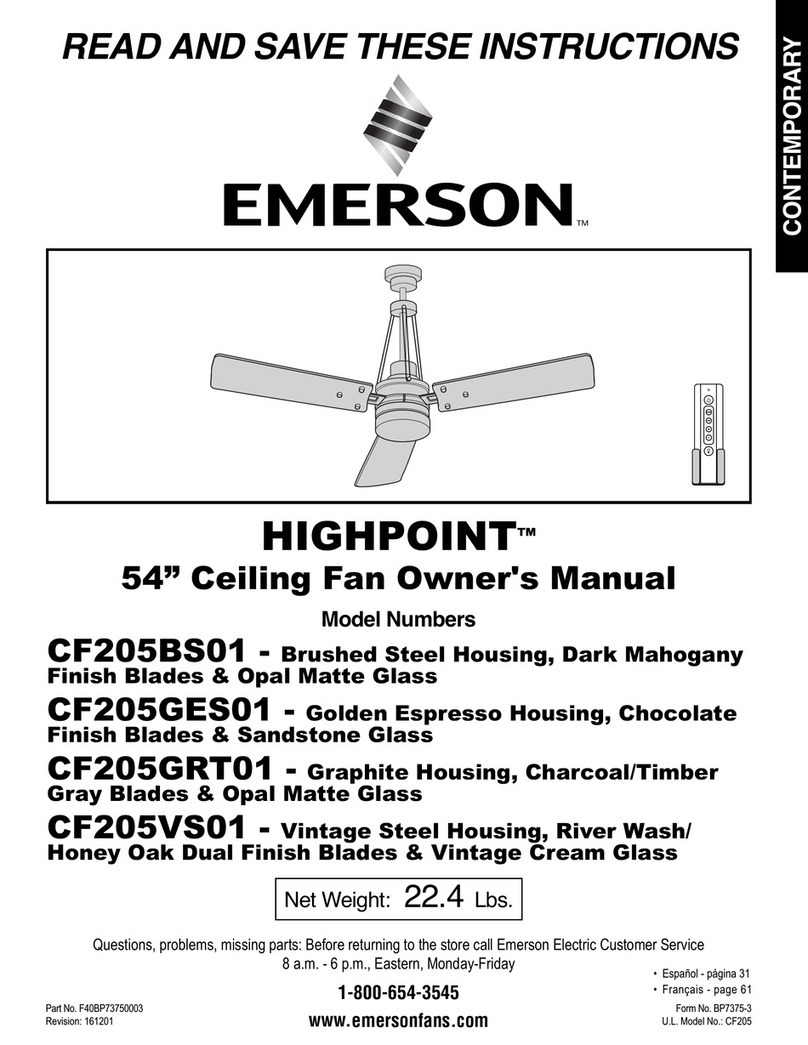
Emerson
Emerson HIGHPOINT CF205GES01 owner's manual

aerauliqa
aerauliqa QR280E Instructions for installation, use and maintenance manual
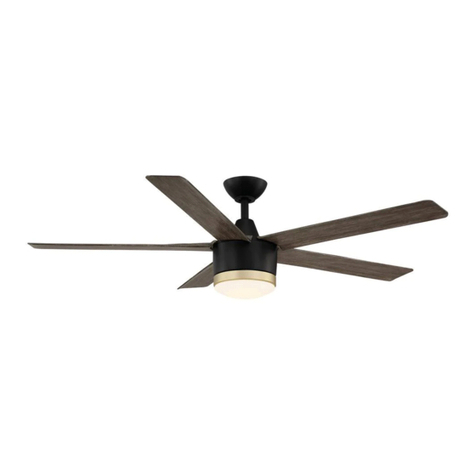
Home Decorators Collection
Home Decorators Collection MERWRY SW1422 Use and care guide
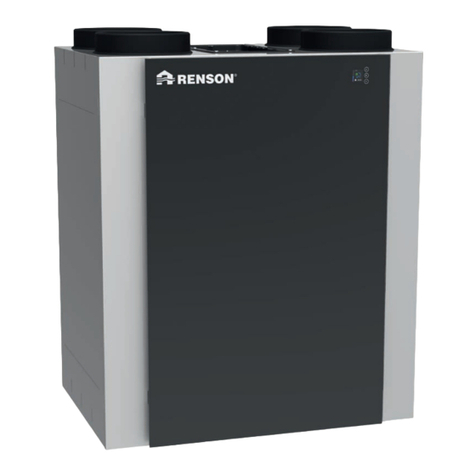
Renson
Renson Endura Delta Series installer and user manual

Hunter
Hunter 21421 Parts guide
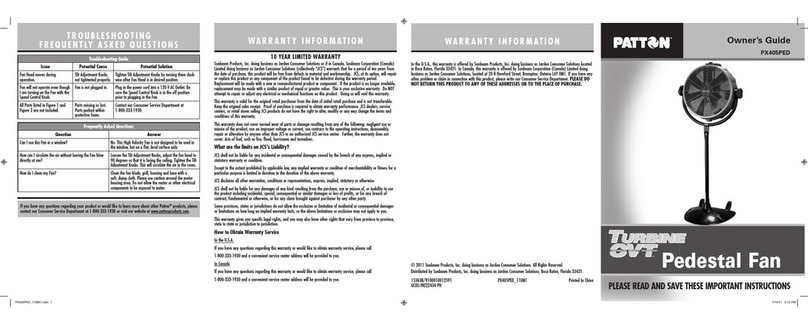
Patton
Patton PX405PED owner's guide
